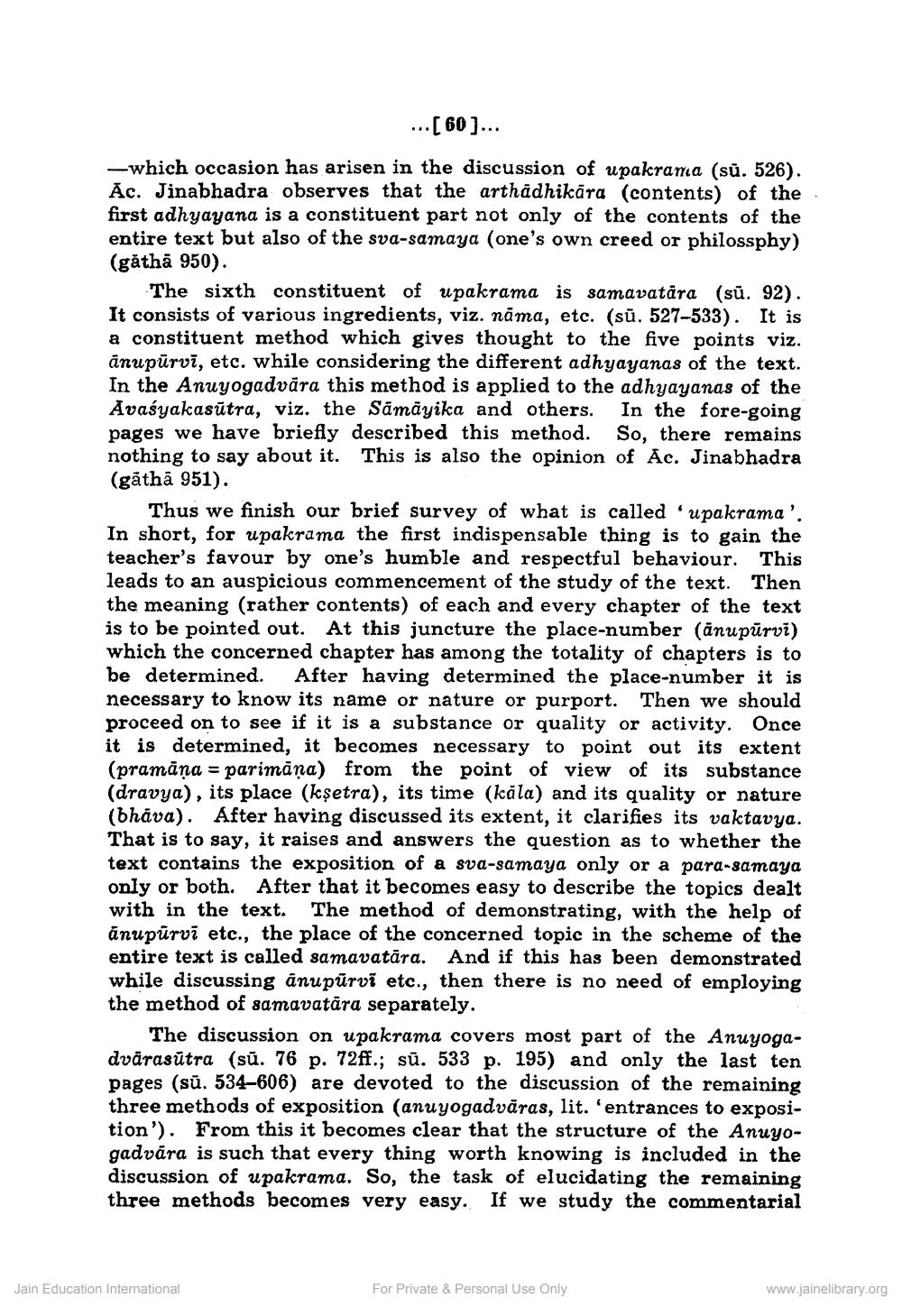________________
...[60]...
-which occasion has arisen in the discussion of upakrana (sů. 526). Ac. Jinabhadra observes that the arthädhikära (contents) of the first adhyayana is a constituent part not only of the contents of the entire text but also of the sva-samaya (one's own creed or philossphy) (găthā 950).
The sixth constituent of upakrama is samavatāra (sü. 92). It consists of various ingredients, viz. nāma, etc. (sū. 527-533). It is a constituent method which gives thought to the five points viz. anupürvi, etc. while considering the different adhyayanas of the text. In the Anuyogadvāra this method is applied to the adhyayanas of the Avasyakasūtra, viz. the Sāmāyika and others. In the fore-going pages we have briefly described this method. So, there remains nothing to say about it. This is also the opinion of Ac. Jinabhadra (găthā 951).
Thus we finish our brief survey of what is called 'upakrama'. In short, for upakrama the first indispensable thing is to gain the teacher's favour by one's humble and respectful behaviour. This leads to an auspicious commencement of the study of the text. Then the meaning (rather contents) of each and every chapter of the text is to be pointed out. At this juncture the place-number (anupūrvi) which the concerned chapter has among the totality of chapters is to be determined. After having determined the place-number it is necessary to know its name or nature or purport. Then we should proceed on to see if it is a substance or quality or activity. Once it is determined, it becomes necessary to point out its extent (pramāņa = parimāna) from the point of view of its substance (dravya), its place (kşetra), its time (kála) and its quality or nature (bhava). After having discussed its extent, it clarifies its vaktavya. That is to say, it raises and answers the question as to whether the text contains the exposition of a sva-samaya only or a para-samaya only or both. After that it becomes easy to describe the topics dealt with in the text. The method of demonstrating, with the help of ānupūrvī etc., the place of the concerned topic in the scheme of the entire text is called samavatāra. And if this has been demonstrated while discussing anupūrvi etc., then there is no need of employing the method of samavatāra separately.
The discussion on upakrama covers most part of the Anuyogadvārasūtra (sū. 76 p. 72ff.; sū. 533 p. 195) and only the last ten pages (sū. 534-606) are devoted to the discussion of the remaining three methods of exposition (anuyogadvāras, lit. 'entrances to exposition'). From this it becomes clear that the structure of the Anuyogadvāra is such that every thing worth knowing is included in the discussion of upakrama. So, the task of elucidating the remaining three methods becomes very easy. If we study the commentarial
Jain Education International
For Private & Personal Use Only
www.jainelibrary.org




